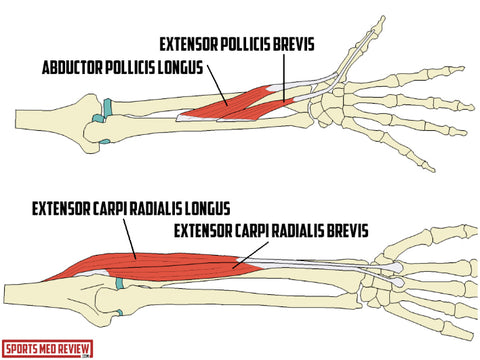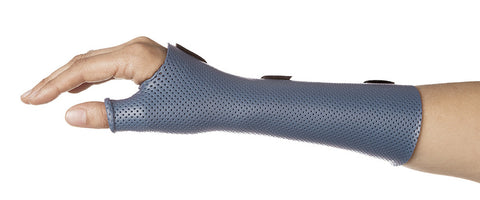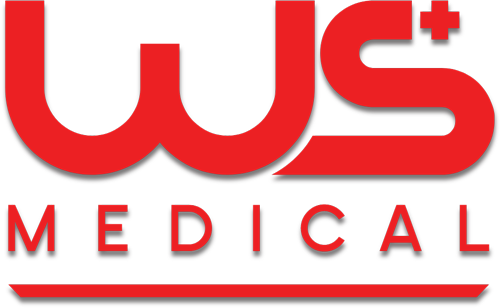Thumb and Wrist Pain: Two Possible Diagnoses
Do you know the best way to treat thumb and wrist pain?
One of the first steps, of course, is to determine the cause. In this article, we’ll be focusing on De Quervain’s and Intersection Syndrome. Two different conditions that can cause thumb and wrist pain, but can be treated with the same Long Opponens Orthosis.
Diagnosing Thumb and Wrist Pain
De Quervain’s and Intersection Syndrome are both associated with thumb and wrist pain. So you may be wondering… how do these two differ?
De Quervain’s Syndrome
Of the two conditions, De Quervain’s Syndrome is far more common. In essence, it is caused by friction within the first dorsal compartment, which occurs between the tendons of the Extensor Pollicis Brevis and the Abductor Pollicis Longus.
It is an overuse injury often seen in new mothers, in particular. However, it can occur in anyone who performs repetitive wrist and hand motions in an activity.
How to diagnose?
Patients with De Quervain’s Syndrome typically have pain and swelling near the base of the thumb and over the first dorsal compartment.
You can use the Finkelstein Test to diagnose De Quervain’s Syndrome:
- First, have the patient flex their thumb into the palm of their hand.
- Then, make a fist.
- After that, grasp the thumb and ulnar deviate the hand sharply.
In case the patient has pain with this maneuver, this confirms the diagnosis. Alternatively, the patient can perform active ulnar deviation at the wrist to see if this elicits pain.

1.tendons associated with De Quervain’s, 2. tendons associated with Intersection Syndrome. Credit: The Sports Medicine Review
Intersection Syndrome
Intersection Syndrome, on the other hand, is thought to be caused by friction at the intersection of the first and second dorsal compartments. The second compartment houses the Extensor Carpi Radialis Longus and Extensor Carpi Radialis Brevis tendons.
It is a rare overuse injury commonly connected with sports activities.
How to diagnose?
Intersection Syndrome is generally associated with repetitive wrist flexion and extension.
Patients usually report pain 4-8 cm proximal to the radial styloid and there may be swelling along the radial aspect of the wrist and forearm. Patients also report redness and tenderness to palpation over the site of swelling and pain with wrist extension and ulnar deviation.
In general, a thorough clinical examination can help determine the exact cause of the patient’s complaints, while MRI scans and ultrasonography will help confirm the diagnosis.
Each patient and their condition must be evaluated to rule out other possible causes of pain, such as scaphoid fractures, osteoarthritis of the first metacarpal joint, ganglion cysts, ligament sprains, and muscle strains.
Orthotic Fabrication for Thumb and Wrist Pain
You can treat both De Quervain’s and Intersection Syndrome with a custom Long Opponens Orthosis. This orthosis should position the wrist in 20 degrees of extension and the thumb CMC joint midway between radial and palmar abduction.
Other interventions may include:
- Anti-inflammatory drugs
- Slow return to stretching and muscle strengthening
- Corticosteroid injections (if symptoms persist)

Long Thumb Opponens Orthosis in Orfilight Atomic Blue NS.
Recommended materials
Elastic non-stick coated materials in particular are an excellent choice for the Long Opponens Orthosis. They allow you to create temporary bonding that’s easily popped apart once the material has hardened.
Try one of the following thermoplastic materials:
Good to know! We also have a handy pre-cut in our range that makes the fabrication of a Long Opponens Orthosis a breeze. It is available in several colors and materials.
How to make it?
The Long Opponens Orthosis is a great orthosis to master because you can use it for a variety of conditions.
In this video, we teach you how to create a perfect Long Opponens Orthosis:
Try the Splinting Guide for a great step-by-step reference. Alternatively, you can read our blog post for further information on the Long Opponens Orthosis.
Patient Follow-Up
Patient education is a critical component of rehabilitation. In fact, you should caution your patients to protect the injured structures and slowly return to normal activities.
And after a short period of rest, anti-inflammatory medications as prescribed, heat/cryotherapy, elevation, and compression, the patient can generally resume a gradual return to daily activities.
During this phase, the patient can also perform progressive stretching and slow strengthening exercises.
In Conclusion
Make sure to evaluate your patients thoroughly to determine which condition, De Quervain’s and/or Intersection Syndrome is causing them pain. Once you’ve made your diagnosis, you can make a great difference for your patients’ recovery with an excellent orthosis.
Do you have any doubts or questions? Let us know. We are eager to help!

